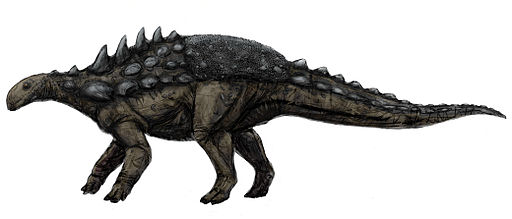The Spiky Armored Dinosaur
Polacanthus was a fascinating dinosaur that lived during the Early Cretaceous period, around 130 to 125 million years ago.

| Meaning | Many spines [Pol-acanthus] |
| Pronunciation | poh-lah-KAN-thus |
| When: | Early Cretaceous (about 130–125 million years ago) |
| Where: | Europe (United Kingdom, Spain) |
| What: | Ankylosaur (armored herbivorous) |
| Weight: | Estimated around 1–2 metric tons |
| Length: | Approximately 4–5 meters (13–16 feet) |
| Diet: | Herbivorous (ate low-lying plants) |
| Discovered: | First described by Gideon Mantell in 1865 |
This dinosaur was a member of the ankylosaur family, a group of dinosaurs known for their heavy armor and defensive adaptations.
The name “Polacanthus” means “many spines,” reflecting the numerous spikes and bony plates that covered its body.
Polacanthus was a medium-sized dinosaur, growing up to about 5 meters (16 feet) in length and weighing around 1.5 tons. Its body was covered in thick, bony armor called osteoderms, which provided protection against predators. One of its most distinctive features was a large, shield-like structure over its hips, adorned with spikes and nodules.
As a herbivore, Polacanthus fed on low-lying plants. It had a beak-like mouth and small, leaf-shaped teeth that were well-suited for cropping vegetation.
Fossils of Polacanthus have primarily been found in Europe, particularly in England, providing important information about the diversity and distribution of armored dinosaurs during the Early Cretaceous.
This spiky dinosaur highlights the incredible variety of forms that armored dinosaurs could take, showcasing their remarkable strategies for survival in a world filled with predators.
